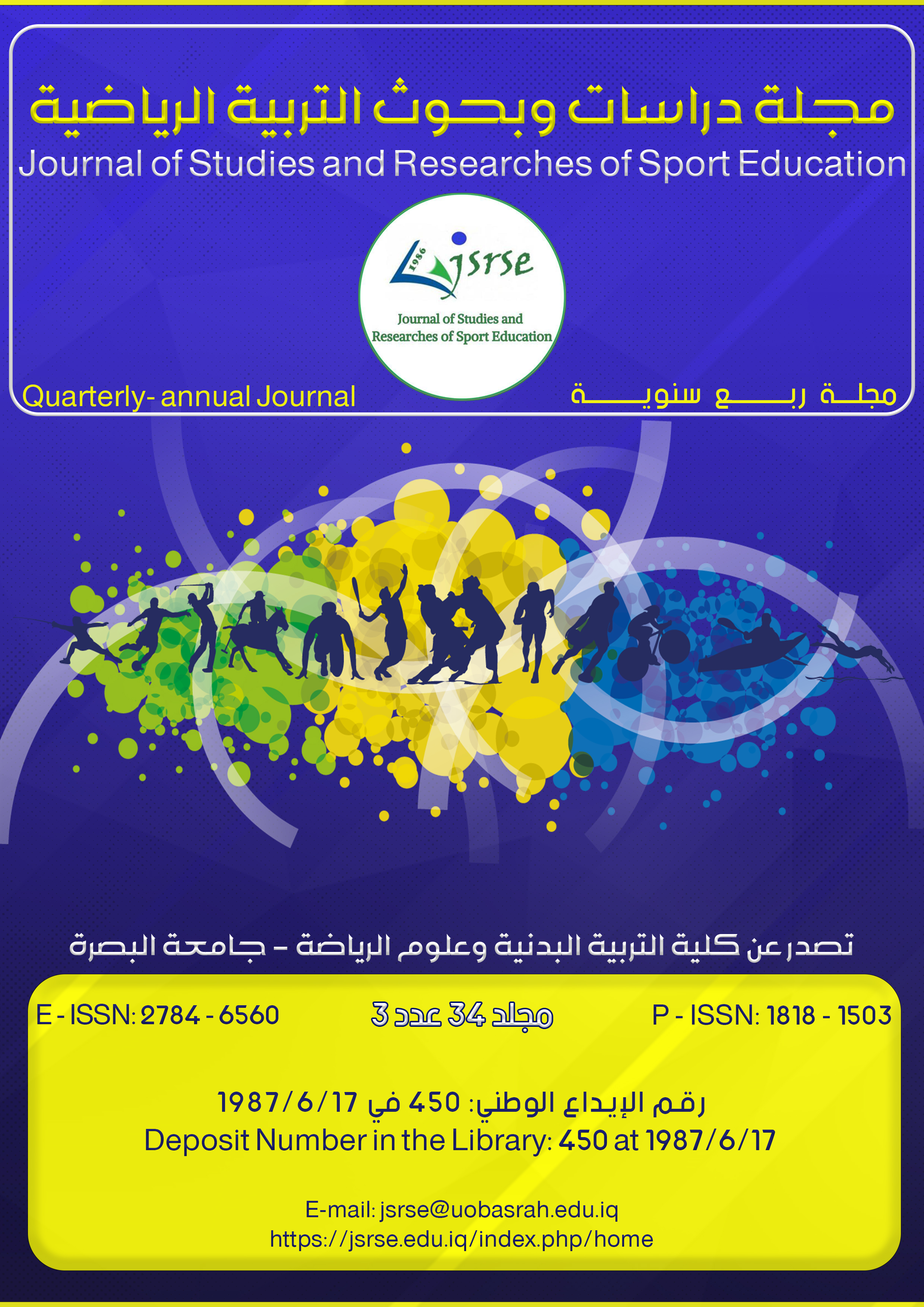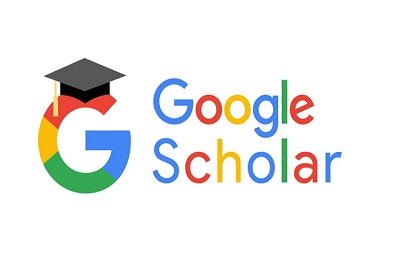الإدراك الحركي والذكاء وعلاقتهما بأداء الدحرجة الامامية والخلفية بالجمناستك
محتوى المقالة الرئيسي
الملخص
يهف البحث الى التعرف على درجة الادراك الحركي والذكاء والدحرجة الامامية والخلفية والعلاقة بين الادراك الحركي والذكاء والدحرجة الامامية والخلفية للبراعم، تم استخدام المنهج الوصفي بأسلوب دراسة العلاقة و بلغت عينة البحث (20) برعم من المركز التدريبي لتربية البصرة، و كانت استنتاجات البحث يتمتع البراعم في المركز التدريبي بدرجة معنوية من الادراك الحركي و الذكاء. ويمتلك البراعم درجة مناسبة من الأداء المهاري للدحرجة الامامية والخلفية ووجود علاقة ارتباط معنوية بين الادراك الحركي والذكاء والدحرجة الامامية والخلفية.
تفاصيل المقالة

هذا العمل مرخص بموجب Creative Commons Attribution-NonCommercial 4.0 International License.
المراجع
Aldewan, L. H., & Muhammad, F. H. (2014). The effect of competition in a manner curriculum to teach comparative some ground movements Fluency and intellectual development of children Riyadh. Journal of Studies and Researches of Sport Education, 40, 74–89. https://www.iasj.net/iasj/article/103715
Al-Diwan, L. H. M., Othman, I. Ahmed., Zitouni, A. Qader. ., & Abdul Rasoul Taiba Hussein. (2013). Games teach small effect by methods of brainstorming and interactive and Prince for the development of some of the creative capacity of motor. Misan Journal for Physical Education Sciences, 7(7), 42–63.
Amin Al-Khouly, & Osama Rateb. (1998). Motor Education for the Child: Vol. 3rd edition (pp. 38–78). Dar Al-Fikr Al-Arabi.
Othman, I. A., Mohamed, L. H., & Shabib, S. S. (2023). The effect of Top Play and Top Sport cards using recreational games in developing children’s creative abilities. Journal of Studies and Researches of Sport Education, 33(2), 33–51. https://doi.org/https://doi.org/10.55998/jsrse.v33i2.466
Ismail, A. F. A. K. (2002). Intelligence and its development among our children (p. 247). Arab House Library.
Jaber, A. H. J. (1975). Intelligence and its Measures (pp. 118–123). Dar Al-Nahda Al-Arabiya.
Jamal, A.-D. A. A.-A. (1990). Perceptual-motor abilities of basic education students, a comparative study between rural and urban areas. Journal of Physical Education Research, Helwan University, 8(5), 8.
Jumaa, M. R. (2003). Intelligence and its relationship to motor perception among students in the fifth year of basic education. Journal of Physical Education and Mass Sports, 1, 153.
Laila, Mr. F. (2003). Measurement and testing in physical education: Vol. 1st edition (p. 111). Al-Kitab Publishing Center.
Mashkoor, N. H., & Othman, I. A. (2023). Perceived Self-Efficacy and Its Relationship to Dexterous Thinking Among Third-Stage Female Students in the College of Physical Education and Sports Sciences - University of Basra. Journal of Studies and Researches of Sport Education , 33(1), 69–83. https://doi.org/10.55998/jsrse.v33i1.376
Qahtan Tohme, H. (2023). The effect of using exercises with aids in learning the skill of the forward roll in artistic gymnastics for children aged 4-6 years. Wasit Journal of Rhea Sciences, 14(2), 171–184. https://doi.org/10.31185/wjoss.170
Raysan, K. M., & Louay, A. (2002). Physical Education and Movement for Preschool Children: Vol. 1st Edition (p. 71). International Scientific House for Publishing and Distribution.
Salwa, M. R. (1981). The relationship between intelligence and motor awareness of children in the second grade of primary school from 6 to 12 years old. The Second Scientific Conference for Studies and Research in Physical Education, Helwan University, 12.





 IASJ
IASJ CC-BY-4.0
CC-BY-4.0 turnitin
turnitin ISSN
ISSN DOAJ
DOAJ Crossref
Crossref GoogleScholar
GoogleScholar Orcid
Orcid